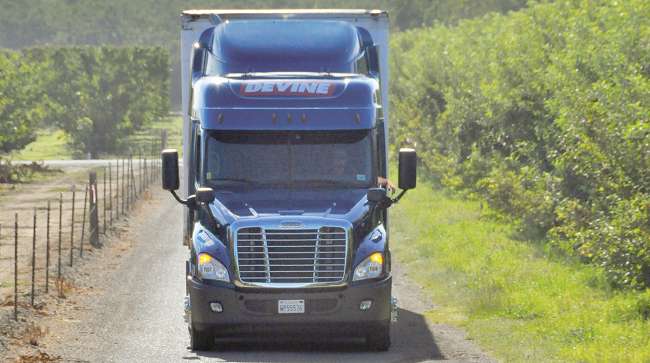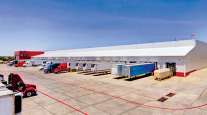Carriers Benefit as California Agricultural Sector Rebounds

California’s drought of 2011 through 2015 didn’t just dry up the state’s harvests of crops such as almonds, grapes and oranges — it also dried up business for motor carriers that haul these and other agricultural shipments out of the Golden State.
During that period, carriers turned to nearby states and Mexico to find shipments. But now that the drought has ended, shipping volumes are showing signs of a rebound, experts said. “The [trucking] numbers that California was running were subpar up until May [of this year], and then we were seeing a lot stronger numbers in May versus one year earlier, which carried over into June,” said Mark Montague, senior rates analyst with DAT, the prominent on-demand freight marketplace. “May freight levels returned to levels not seen since 2013, boosting freight rates for vans, flatbeds and reefers on the trucking spot market.”
Richard Coyle, president of Sacramento-based Devine Intermodal, said he expects a 7% increase over last year’s trucking demand. His business is largely dried fruits and almonds, prunes and raisins, but also rice, which he said looks particularly strong for the upcoming harvest season. Devine has three terminals in the Central Valley.
“What we are expecting with rice, one of the heaviest commodities out of the state and a heavy water user, is a surge of activity in anticipation of the new crop. Rice mills throughout Northern California are blowing out last year’s inventory,” Coyle told Transport Topics.
He said rice processors are taking up more room in warehouses for the expected boon. Similarly, almonds — which also require huge amounts of water — can be grown and harvested without concern. During the height of the drought, almond growers were pilloried for continuing water use as farmers fought for the right to keep tapping water necessary to keep crops vibrant.
In June 2015, Gov. Jerry Brown mandated 25% water restrictions in the state for cities and municipalities, and though agriculture was not included in the mandate, the lingering drought still proved dire for water-intensive California crops such as almonds and grapes. Seeing that the drought was a blight on the state in 2014, many farmers took it upon themsleves to not even grow that year.
“They voluntarily did not plant 400,000 acres that year,” according to George Kostyrko, director of public affairs for the California State Water Resources Control Board.
Michael Card, president of Central Point, Ore.-based Combined Transport, said his company is seeing strong growth in California, “Central Point is seeing in the range of 10-15 % higher demand,” with the lion’s share coming from Yuma and Salinas. The company has its reach into all continental states and Canada, and operates flatbed, heavy-duty and refrigerated divisions. He said the grape industry, particularly the wine grape industry, has exploded in Oregon, “sometimes replacing orange and apple trees.”
Card said 2017 is expected to be a banner year for crops throughout the Western states, but “particularly California.”
“More rainfall over the past two years has really increased crop yield,” he said, “and we’ve seen a higher demand for our truck services in both the Yuma and Salinas areas.”
Montague said, “June brought more improvement in rates despite triple-digit temperatures that slowed shipping from the Imperial Valley and caused a setback in the Central Valley for crops such as grapes. It’s going to pick up toward the end of July when grape production comes on [in the state], and also the Pacific Northwest is in a really good place, too, so we are thinking we’ll be up in overall numbers in 2017 versus ’16, even if it’s only 3%. Even that 3% means thousands of additional truckloads of produce.”
Nationwide, he noted that DAT measured that refrigerated equipment rates climbed 7.4% higher in June, indicating an uptick in trucks servicing fresh fruits and vegetables.
These trends are helping reshape the contract marketplace, which has been in a downward spiral since the second half of 2015, he said.
While Florida has been doing well, higher temperatures there and in other parts of the country are shifting the way Americans grow and make their produce. “The crops in Florida have really changed,” said Montague. “People associate the state with oranges, but with citrus greening [a disease that makes citrus inedible] and so forth, crops are changing, and they are growing more varieties of vegetables now. Potatoes and tomatoes are now becoming dominant in Florida.”
The future looks bright, if mixed, according to Montague.
“Delayed plantings and the up-and-down weather trends have had mixed impacts on harvests,” he said. “If apples and potatoes perform on a par with last year, that should provide a boost to trucking, which shows solid signs of emerging from a two-year slump.”




